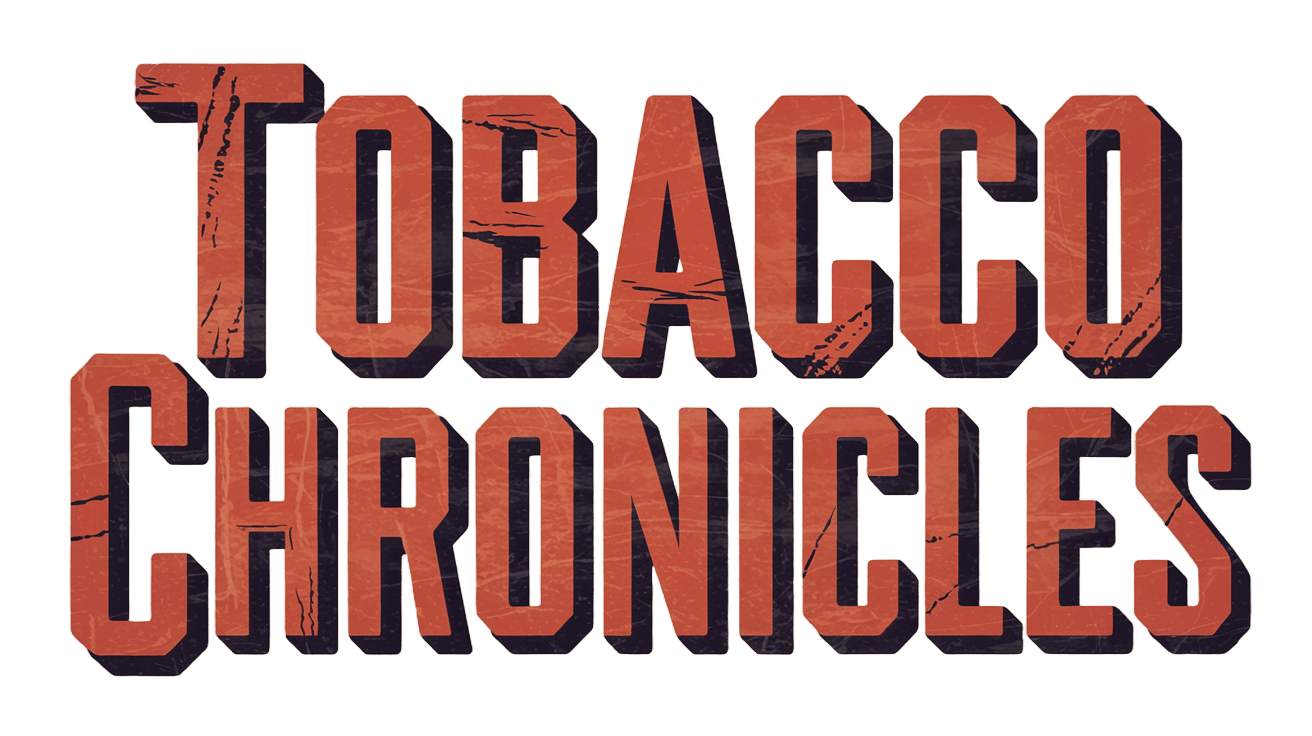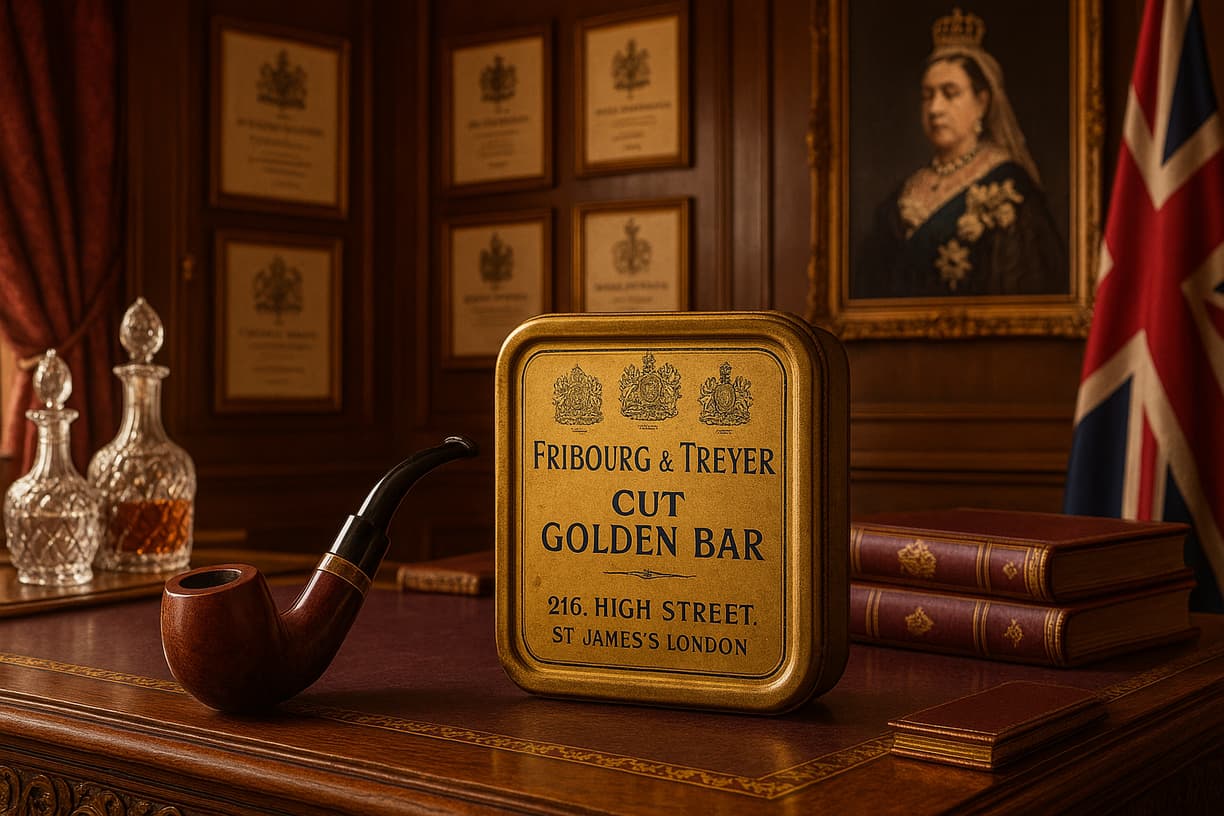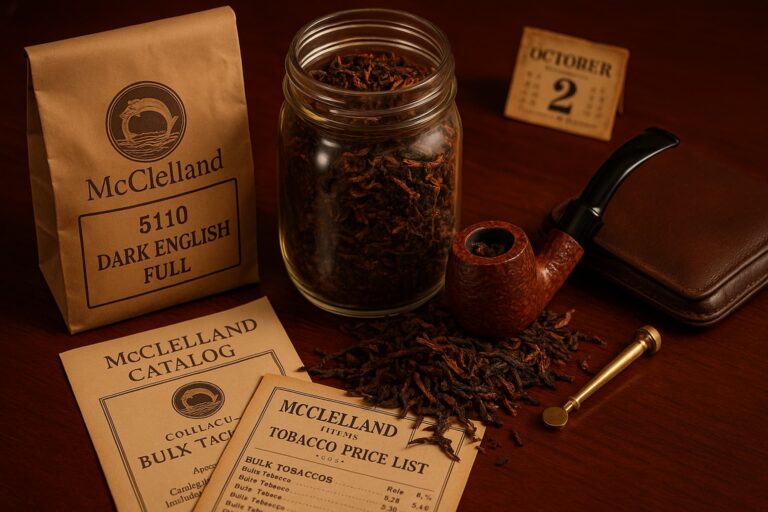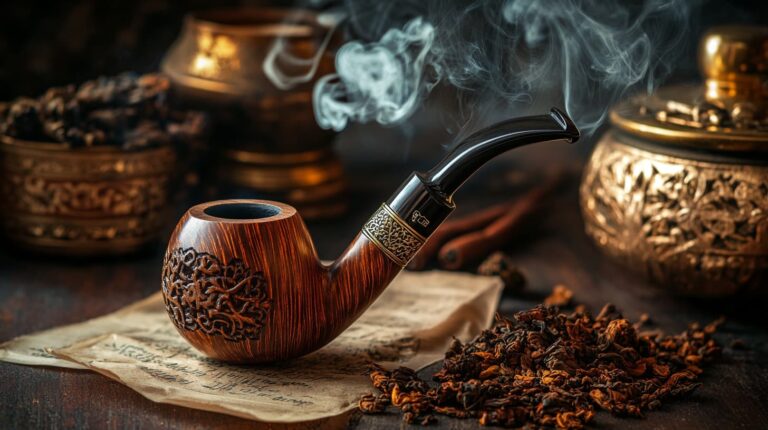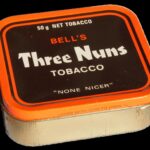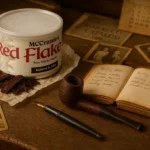A Review of the Ultimate Royal Warrant Tobacco
There are tobacco blends that claim prestige, and then there is Fribourg & Treyer Cut Golden Bar—tobacco that literally graced the pipes of British monarchs for over three centuries. When I carefully opened this 1978 vintage tin, forty-five years after it was sealed in London, I wasn’t just accessing aged tobacco; I was connecting with a tradition that began when George I sat on the throne and has continued through fifteen successive monarchs.
This isn’t hyperbole or collector romanticism. This is the tobacco that held royal warrants from both the King of England and the King of Belgium, the blend that was crafted behind the historic bow windows of 34 Haymarket from 1720 until the 1980s. When I light my Peterson Sherlock Holmes Watson bent apple with this tobacco, I’m smoking the same blend that was prepared for kings, queens, prime ministers, and the aristocracy of the British Empire at its zenith.
The House That Served Kings
To understand Cut Golden Bar, one must first understand the extraordinary heritage of Fribourg & Treyer. Founded in 1720 by Mr. Fribourg at 34 Haymarket in London’s Westminster borough, this wasn’t merely a tobacco shop—it was an institution that would serve the British monarchy for over two and a half centuries. The very year that Fribourg opened his doors, the South Sea Bubble was collapsing and Sir Robert Walpole was becoming Britain’s first Prime Minister. This tobacco house would outlast empires.
The royal appointments weren’t ceremonial honors; they were working relationships. Fribourg & Treyer held the coveted designation “Tobacconists to His Majesty,” meaning they were the official suppliers of tobacco to the royal household. This wasn’t a title granted lightly—it required consistent excellence, absolute discretion, and the ability to meet the exacting standards of the most powerful monarchy in the world. The fact that they maintained this appointment through multiple reigns, political upheavals, and changing tastes speaks to a level of quality that modern tobacco companies can barely comprehend.
What makes this even more remarkable is that Fribourg & Treyer didn’t just serve the British crown. They also held a “Royal Appointment” from the King of Belgium, making them one of the few tobacco houses in history to serve multiple European monarchies simultaneously. This dual royal recognition placed them at the absolute pinnacle of European tobacco craftsmanship, a position they maintained for over 260 years.
The Golden Standard
Cut Golden Bar represents everything that made Fribourg & Treyer legendary. This is a straight Virginia blend, but calling it “straight Virginia” is like calling Château d’Yquem “sweet wine”—technically accurate but woefully inadequate. This is Virginia tobacco elevated to the level of art, processed with techniques that were perfected over centuries of serving the most discerning palates in Europe.
The tobacco itself tells the story of an era when quality was never negotiable. The leaf selection shows the kind of attention to detail that could only exist when cost was secondary to excellence. These are golden Virginia tobaccos that have been aged, pressed, and cut with a precision that speaks to generations of accumulated expertise. The ribbon cut is perfect—fine enough to pack easily but substantial enough to burn slowly and evenly.
What strikes me immediately upon opening this forty-five-year-old tin is the preservation. The tobacco retains its golden color with only the slightest darkening that speaks to proper aging rather than deterioration. The moisture content is perfect—not too dry, not too moist, but with that ideal texture that indicates tobacco that was properly prepared and has aged gracefully. This is what happens when master craftsmen prepare tobacco with the knowledge that it might be stored for decades.
The Royal Smoking Experience
Lighting Cut Golden Bar is like stepping into a time machine. The initial flavors are pure Virginia—sweet, grassy, with that distinctive hay-like quality that characterizes the finest golden leaf. But this isn’t the sharp, sometimes harsh Virginia that modern smokers might expect. This is Virginia that has been mellowed by four and a half decades of aging, Virginia that has developed the kind of complexity that only time can create.
The first third of the bowl reveals layers of flavor that unfold gradually. There’s the natural sweetness of well-aged Virginia, but underneath that sweetness is a complexity that speaks to the quality of the original leaf and the skill of the blenders. I detect notes of honey, dried fruit, and that distinctive “golden” quality that gives this blend its name. This isn’t tobacco that shouts its virtues; it’s tobacco that whispers them to those sophisticated enough to listen.
As the bowl progresses, the aging becomes more apparent. The harsh edges that might have existed in fresh tobacco have been completely smoothed away, leaving a smoking experience that is both satisfying and refined. The nicotine content is moderate—enough to satisfy but never overwhelming, exactly what one would expect from tobacco designed for the leisurely enjoyment of aristocrats and royalty.
The final third reveals the true mastery of this blend. Where lesser tobaccos might become bitter or harsh, Cut Golden Bar maintains its character to the very bottom of the bowl. The flavors deepen and concentrate, but never become unpleasant. This is tobacco that was designed to be savored completely, tobacco that respects both the smoker and the leaf itself.
The Lost Art of Royal Tobacco
Smoking this aged Cut Golden Bar is both a privilege and a melancholy experience. It’s a privilege because I’m experiencing tobacco craftsmanship at its absolute peak—tobacco that was prepared with techniques and standards that no longer exist. But it’s melancholy because it represents something that has been lost forever.
The modern tobacco industry, for all its efficiency and consistency, cannot recreate what Fribourg & Treyer achieved. It’s not just about the tobacco itself, though the quality of leaf available today pales in comparison to what was available in the golden age of tobacco. It’s about the entire approach to tobacco craftsmanship—the willingness to spend whatever time and resources were necessary to achieve perfection, the accumulated knowledge of generations of master blenders, and the cultural context that valued quality above all else.
When Fribourg & Treyer prepared Cut Golden Bar, they weren’t just making tobacco; they were upholding a tradition that connected them to centuries of British history. They were creating tobacco worthy of kings, tobacco that would represent the finest that British craftsmanship could achieve. This wasn’t a product; it was a cultural artifact, a tangible expression of an entire civilization’s approach to quality and excellence.
The fact that this tradition lasted for over 260 years makes its loss even more poignant. Fribourg & Treyer survived the American Revolution, the Napoleonic Wars, two World Wars, and the dissolution of the British Empire. They served fifteen monarchs, countless prime ministers, and generations of British aristocracy. What finally killed them wasn’t war or revolution—it was the modern world’s inability to value the kind of craftsmanship they represented.
A Meditation on Monarchy and Tobacco
There’s something profoundly moving about smoking tobacco that was prepared for royalty. It’s not about monarchism or political systems; it’s about connecting with a level of craftsmanship and attention to detail that was once considered normal for the finest things in life. When I smoke Cut Golden Bar, I’m not just enjoying aged tobacco—I’m participating in a tradition that stretches back three centuries.
This tobacco represents an era when the finest craftsmen in the world competed for the honor of serving royalty, when royal warrants meant something beyond marketing, when the phrase “fit for a king” wasn’t hyperbole but a literal description of quality standards. The fact that Fribourg & Treyer maintained their royal appointments for over two centuries speaks to a consistency of excellence that modern corporations can barely imagine.
The royal warrant system, for all its aristocratic associations, created something valuable: a standard of quality that transcended commercial considerations. When Fribourg & Treyer prepared tobacco for the royal household, they couldn’t cut corners, couldn’t compromise on quality, couldn’t prioritize profit over perfection. The result was tobacco like Cut Golden Bar—tobacco that represents the absolute pinnacle of what the craft could achieve.
The Economics of Excellence
Understanding Cut Golden Bar requires understanding the economic model that made it possible. Fribourg & Treyer operated in an era when the wealthy were willing to pay whatever was necessary for the finest quality, when royal warrants provided both prestige and steady income, when craftsmanship was valued above efficiency.
This wasn’t mass production; this was bespoke tobacco craftsmanship. Every aspect of the process—from leaf selection to aging to final preparation—was done with the knowledge that the end user might be a king or queen. This created an economic environment where quality was the only consideration, where the question wasn’t “how cheaply can we make this?” but “how perfectly can we make this?”
The modern tobacco industry operates under completely different constraints. Mass production, regulatory compliance, cost optimization, and shareholder returns have replaced the aristocratic patronage system that made Fribourg & Treyer possible. The result is tobacco that is safer, more consistent, and more affordable—but tobacco that lacks the soul and craftsmanship that made Cut Golden Bar legendary.
This isn’t nostalgia; it’s recognition of what we’ve lost in the transition to modernity. The democratization of tobacco has brought many benefits, but it has also eliminated the economic conditions that made transcendent quality possible. We can appreciate what we have while mourning what we’ve lost.
The Verdict of Time
After forty-five years of aging, this Cut Golden Bar has achieved something approaching perfection. The harsh edges have been smoothed away, the flavors have integrated and deepened, and the overall smoking experience has reached a level of refinement that fresh tobacco simply cannot match. This is what happens when master craftsmen prepare tobacco with the knowledge that it might be aged for decades.
But even accounting for the benefits of aging, it’s clear that the original tobacco was extraordinary. The foundation had to be perfect for the aging to achieve these results. Lesser tobacco would have deteriorated or become unbalanced; only tobacco of the highest quality could age into something this magnificent.
This single tin represents more than just aged tobacco—it represents the end of an era. When Fribourg & Treyer closed their doors in the 1980s, they took with them over 260 years of accumulated knowledge, tradition, and craftsmanship. The techniques they used, the standards they maintained, and the cultural context that made their work possible are gone forever.
Smoking Cut Golden Bar is both a celebration and a funeral—a celebration of what human craftsmanship could achieve at its peak, and a funeral for a way of life that valued quality above all else. It’s tobacco that reminds us what we’re capable of when we refuse to compromise, when we value excellence over efficiency, when we create not just for profit but for posterity.
In an age of mass production and corporate efficiency, Cut Golden Bar stands as a monument to a different approach—an approach that created tobacco worthy of kings and queens, tobacco that could maintain royal warrants for centuries, tobacco that represents the absolute pinnacle of what the craft could achieve. We are unlikely to see its equal again.
Rating: ★★★★★ (5/5 stars)
Availability: Discontinued (original F&T closed 1980s)
Original Manufacturer: Fribourg & Treyer, 34 Haymarket, London (1720-1980s)
Blend Type: Straight Virginia
Primary Components: Golden Virginia tobaccos, ribbon cut
Strength: Medium
Character: Refined, aristocratic, perfectly balanced Virginia
Aging Potential: Exceptional (as evidenced by this 45-year-old specimen)
Royal Heritage: Royal warrant holder to British and Belgian monarchies for over 260 years
